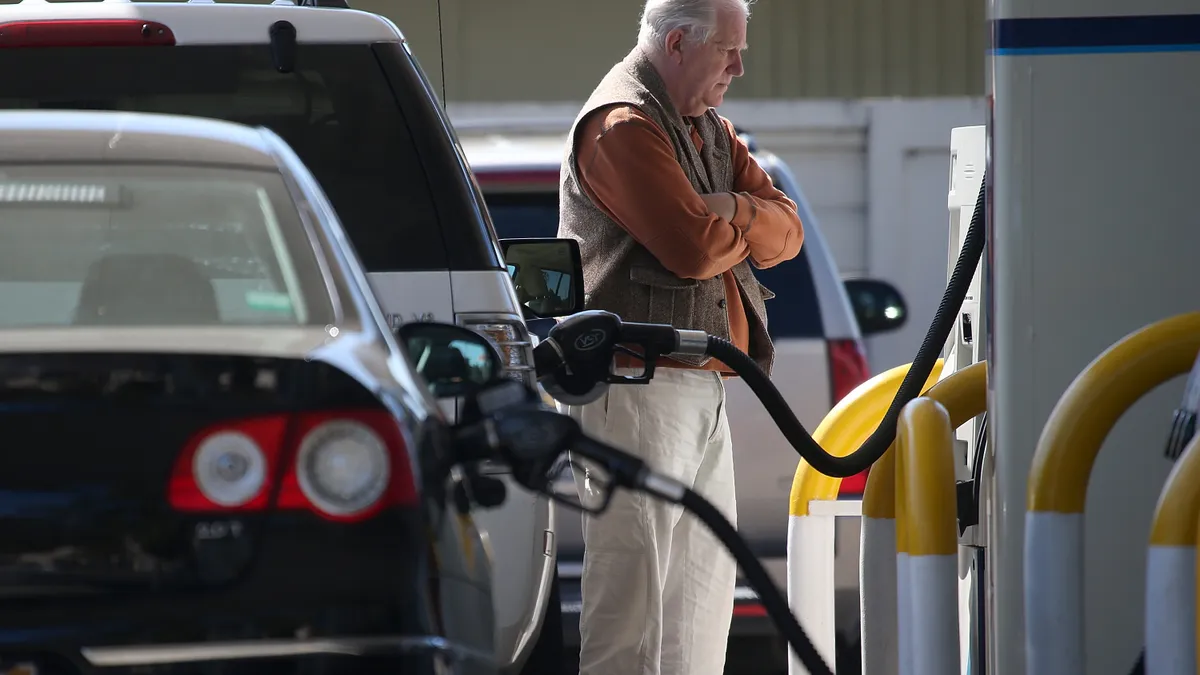Dive Brief:
- U.S. consumer sentiment perked up this month — sustaining a recovery from a record low in June — as a decline in the price of gasoline and other essential goods prompted expectations that inflation will slow, according to a preliminary survey by the University of Michigan.
- The university’s consumer index gauging attitudes toward the economy increased to 55.1 from 51.5 last month after slumping to 50 in June, the lowest level since the start of the index seven decades ago.
- “All components of the expectations index improved this month, particularly among low- and middle-income consumers for whom inflation is particularly salient,” Joanne Hsu, director of the University of Michigan’s surveys of consumers, said in a statement. “The year-ahead economic outlook rose substantially to just above its average” during the second quarter.
Dive Insight:
Brighter consumer sentiment is a good sign for CFOs concerned that the Federal Reserve's most aggressive pullback in stimulus since the 1980s may push the economy into recession. Consumer spending accounts for roughly 70% of gross domestic product (GDP).
CFOs confront mixed signals on the likelihood for a downturn. The economy shrank 0.9% during the second quarter and 1.9% during the first three months of 2022, meeting the common definition of recession as negative growth during at least two consecutive quarters.
U.S. manufacturing has shown signs of flagging during the past several weeks and the housing market, which contributes 15% to 18% of GDP, has slumped so far this year. Builder confidence in August fell for the eighth consecutive month, the National Association of Home Builders (NAHB) said Monday.
A gauge of “buyer traffic” at homes for sale sagged to the lowest level since the start of the pandemic in early 2020 in “a troubling sign that consumers are now sitting on the sidelines due to higher housing costs,” NAHB Chairman Jerry Konter said in a statement. Housing costs surged 5.7% last month in the largest increase since 1991.
The outlook for the economy also shows some signs of brightening. While forgoing home purchases, consumers stepped up outlays in June for a variety of goods and services. Retail spending rose 1%.
U.S. employers far outshined forecasts and expanded payrolls in July by 528,000, pushing down unemployment to 3.5% — a 50-year low seen just prior to the pandemic in early 2020.
Also, inflation slowed more than expected in July, increasing 8.5% compared with the same month last year after rising 9.1% on an annual basis in June, the Labor Department said Wednesday. The average price of gasoline has fallen 14% during the past month, according to AAA.
Although food prices surged 10.9% last month compared with July 2021, consumers have grown more optimistic that the Fed will curb inflation.
The median expected year-ahead inflation rate fell this month to 5%, its lowest reading since February, the University of Michigan found in its survey. The median long run expectation for inflation stayed within the 2.9% to 3.1% range of the past year.
The New York Fed also identified improved consumer sentiments toward price pressures. It found in a survey last month that expectations for median inflation in July 2023 fell to 6.2% from 6.8% in a June survey. Consumers expect 3.2% inflation in three years, down from 3.6% in June, and 2.3% in five years compared with 2.8% in the prior survey.
“Still, the share of consumers blaming inflation for eroding their living standards remained near 48%,” Hsu said.












